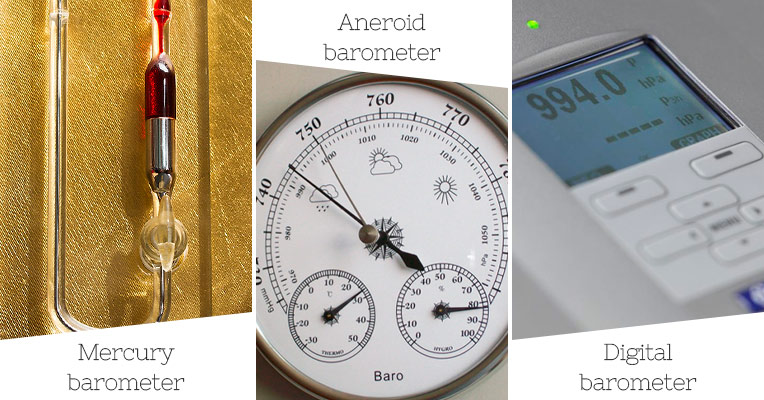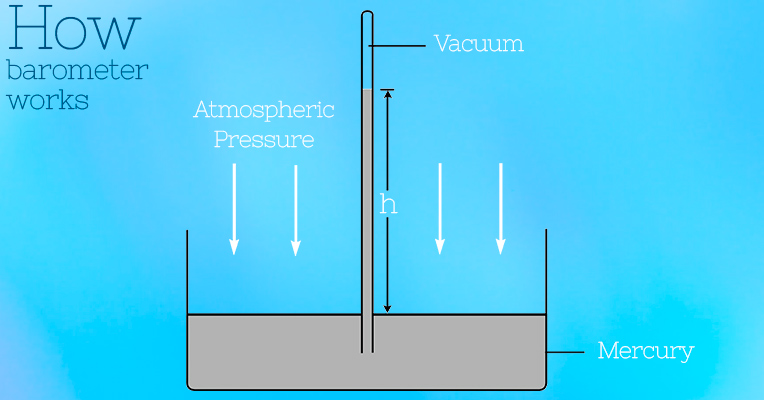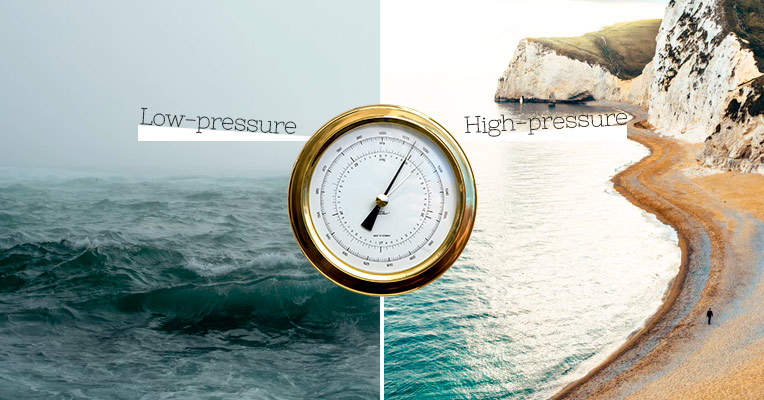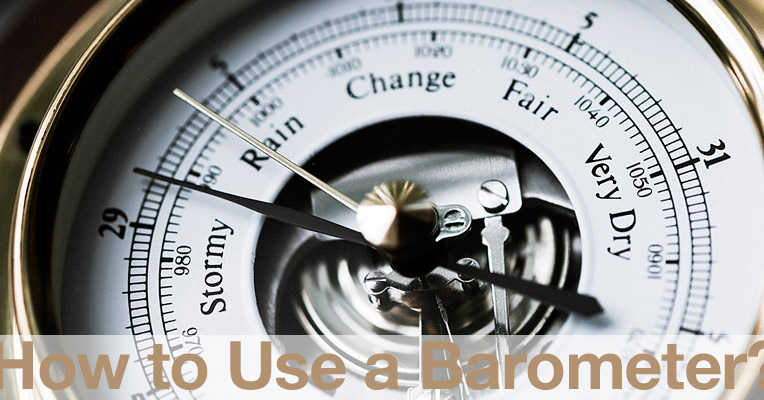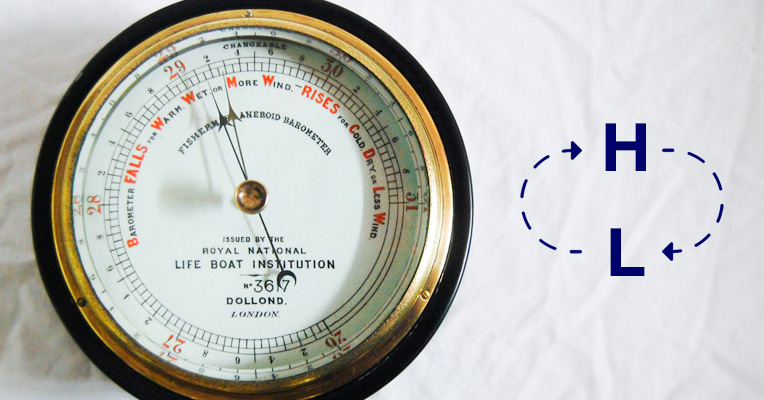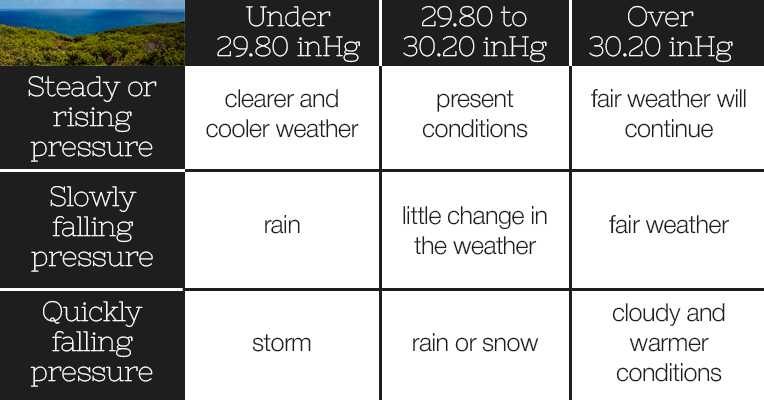Today, barometers can be of mercury, aneroid or digital type. The aneroid models contain no fluid and, consequently, no dangerous elements. They are great for home use and traveling. However, before the creation of aneroid barometers, people used only mercury devices to measure atmospheric pressure. In the 17th century, people noticed the connection between the changes in air pressure and the weather. And in 1643, Evangelista Torricelli, an Italian scientist, invented the first barometer. Its design was extremely simple. A long tube was placed in a container filled with mercury. The tube "collected" the liquid metal once the pressure began to increase. Later, the same technology was used in thermometers.Therefore, the Italian scientist can also be considered as the inventor of a thermometer. Only in 1840, the first mechanical barometer without liquid metal was created.
The atmosphere is the mixture of fumes that creates certain pressure on the Earth's surface. Even the air that surrounds our planet creates some kind of atmospheric pressure. To put it simply, the air pressure is actually the weight of the air pressing down on land and water. We do not even notice the pressure changes, however, a barometer can easily measure them. Only as you climb a mountain, you might notice that the air becomes thinner and the pressure drops. But a barometer can inform you about even the slightest changes in air pressure. The measurements might be affected by air temperature, air density, and height above the sea level. By the way, the air pressure at sea level makes 1 atmosphere (Atm) provided that the temperature is 59 degrees F.
Mercury barometer. The principle of operation is quite simple. This kind of barometer consists of a container filled with mercury and a tube. The atmosphere pushes down on the container with mercury, causing it to rise up in the tube.
The aneroid barometer has an airtight metal box inside, and once air pressure rises or falls, this box squashes inward or flexes outward a bit. As the sealed box moves in and out, the spring attached to it expands or contracts, moving the pointer on the barometer dial. The dial shows not only barometric pressure but also such weather forecast symbols as “Stormy”, “Rain”, “Change”, “Fair”, “Very dry”, etc.
The most popular barometers today are digital ones. They use a pressure transmitter that can instantly convert pressure into an electrical signal. This transmitter often has a strain-gage base. Pressure applied to the transmitter causes the deformation of strain gages. This system can be used in smartwatches, cell phones, and other gadgets. Of course, you can also find all-around digital weather stations on the market. How to read a digital barometer if it has no pointers or mercury scale? Easier than ever! A digital device has a LED display that can also show weather forecast for the next few days.
The barometric reading might be shown in inches of mercury (inHg), millibars (mb), or Pascals (Pa). A pressure at sea level equals 1013.25 millibars.
Many years ago, Blaise Pascal, a French inventor, discovered that the changes of barometric pressure at the ground level are somehow connected with weather changes. For example, if a low-pressure system is moving towards your region, you’re likely to have a rain. And the areas of high-pressure often lead to dry and fair weather. By understanding barometric pressure readings, you can easily predict the weather. So, how to read a barometer?
A barometer can read atmospheric pressure super accurately. In the US, the measurements are traditionally carried out in inches of mercury. If the barometer readings are the same (or higher) as the standard pressure at sea level, you will have a wonderful day ahead. You can safely go hiking, travel to your country house, or set off for a cycling tour. But if the pressure falls below 1 Atm or 30 inHg, it’s likely that the weather will get worse. Overall, the high pressure notifies about warm and windless weather, while the low pressure indicates temperature drop, rain, or even storm. In order to predict the weather, the barometer shouldn’t be necessary placed outside. The barometric pressure readings will be exactly the same inside your house. However, the slight difference might occur if you measure pressure on the 10th and 25th floor, for instance. The lower the barometer is situated, the lower pressure it shows. To get the most accurate readings possible, you should put a barometer on a flat surface. And if you use a built-in digital barometer in your wristwatch, for example, it's better take it off and put on a table.
How Can You Use a Barometer to Predict Weather?
Have you ever wondered what those big moving “H” and “L” signs mean? These are large areas with high and low pressure. As we have already mentioned, the stable high pressure indicates good, fair weather, while the low-pressure system alerts you to a rain, snowfall, or storm.
- The barometer readings rise when the weather is fair (the air is dry and cool);
- The barometric pressure falls if the weather is gloomy (the air is warm yet wet);
- If the pressure falls rather quickly, this means that a storm or bad weather is on the way. And vise versa - rapid rises of pressure mean clear weather;
- When the barometer readings remain steady, don’t wait for weather changes.
Above is a handy table with barometer readings and explanation on how you can interpret them.
As you see, a barometer is the kind of tool that will prove useful in any household. It can help you predict the weather changes so that bad weather no longer catches you completely unawares.

